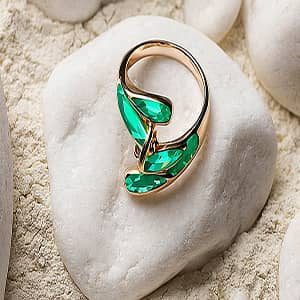The gold market in the last decade
Since the second half of the nineties, the gold market in Iran faced severe price fluctuations and disruptions, which had significant effects on gold buying and selling patterns. These developments led to important changes in consumer behavior and jewelry design and production trends.
Changes in the buying and selling pattern
- Tendency to light and second-hand gold: With the increase in the price of gold, people turned to buying light and second-hand gold instead of buying new and heavy gold. This change in the buying pattern increased the demand for light and fancy gold.
- Fancy gold and jewelry: Fancy gold with special designs such as butterfly and Jadau, as well as customized gold combined with leather and texture, have become the trend of the day and attracted many audiences.
Impact on production and design
- Increasing the production of fancy and minimal golds: Brands and production workshops started to produce more light and fancy golds. Also, clothing brands also entered the field of gold production and added minimal and simple but popular works to the design of their clothes.
- Renovation of the traditional market: The traditional gold market also began to reform with the entry of new competitors and innovations and increased the import of modeled foreign gold. These measures helped to create more variety and improve the quality of products.
Design features and new products
- Combination with leather and texture: New golds, especially in fancy styles, are often combined with other materials such as leather and texture, which gives more visual appeal and variety to the products.
- Minimal and simple designs: These designs, which are simple but stylish and popular, include the use of small and minimal details such as gold buttons or golden collars.
- Innovation in design: The gold market has moved from traditional to innovative and modern designs, which attracts new customers and maintains the attractiveness of the market.
Economic and social impacts
- Recession and fluctuations: Despite the recession and price fluctuations, changes in the design and production of gold have increased the variety and attractiveness of products and attracted more customers.
- Establishment of new brands and workshops: Many new businesses have entered the gold market, and gold manufacturing brands and workshops have been established, which help the gold industry grow and develop.
Conclusion
Changes in the Iranian gold and jewelry market in the last decade have been accompanied by severe price fluctuations and economic and social developments. These changes have led to changes in buying and selling patterns, design and production of jewelry. The production of light and fancy gold, the entry of clothing brands into the gold market, and innovation in design have moved the gold market out of the traditional mode and towards a more modern and diverse market. These changes have not only increased the attractiveness and diversity of the products, but also improved the quality and attracted new customers by creating competition and innovation.





